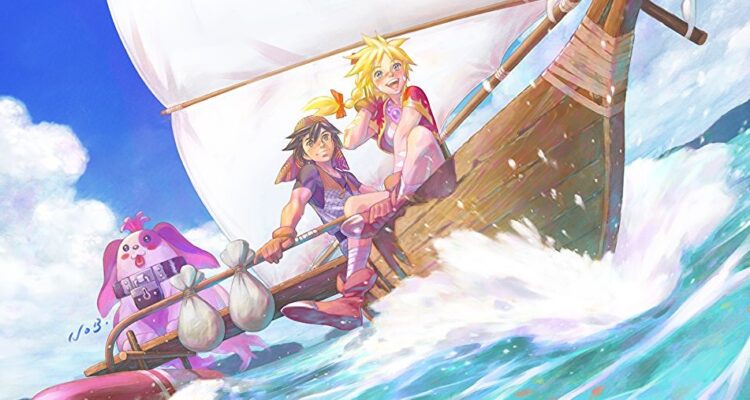
Chrono Cross is a time travel tale but it often feels more like a ghost story, albeit one rendered in dazzling, oceanic colours that give every pre-rendered backdrop the ambience of a tropical reef. Teenage protagonist Serge is gathering shells on the beach one day when he tumbles through a portal to a parallel world. This world has a different history: its version of Serge died as a child, his epitaph written in coral high above the waves. Seeking answers, Serge meets a boisterous, Australian-accented girl called Kid, and joins the hunt for a sinister, cat-headed man who is himself searching for something called the Frozen Flame.
This journey sees you warping back and forth between worlds, the basis for a narrative in which every character, place or thing is haunted by its alternative. In one reality, a vast technological complex exists far across the sea; in another, it is a ruin. In one reality, a local man has become an accomplished fisherman; in the other, he is a feverish recluse who worships a straw idol (which you can eventually recruit as a party member). In one reality, the lagoons surrounding a fairy village have been drained, thwarting access to a dragon; in the other, they have been overrun by goblins ousted from their homelands.
Where its acclaimed SNES predecessor Chrono Trigger operates period by period, Chrono Cross offers a universe without a past: everything that might have been exists simultaneously, giving rise to a pervasive anxiety as possibilities clash and threaten to cancel each other, a predicament emblematised by the game’s omnipresent, beautiful but horrifying ocean. This applies especially to Serge, walking the boundary between life and death, existence and anachronism – an irresolution that feeds into one of the greatest plot twists of the PS1 era. But Serge is also a kind of cosmic janitor, switching dimensions in order both to bypass obstacles and reconcile the tensions between parallel selves, each the ghost in the other’s mirror.





